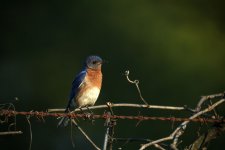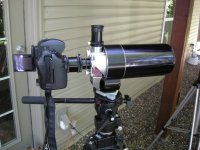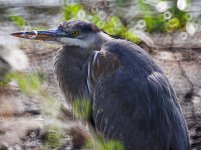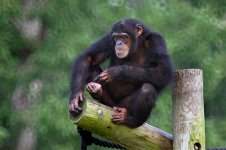bluedubius
Rick
Another example of using what is usually considered an "astro" scope with a DSLR to take long focal length photos of birds. The Meade ETX-90 is a Maksutov-Cassegrain type scope with a focal lenth of 1250mm at f13.8. Two major advantages: 1. the scope I took this photo with can be had off of ebay almost any day of the week for less than $200 (this is the old RA model, but any ETX or other mak-cass scope will do); 2. this scope design results in pratically zero CA. Of course their are a number of disadvantages that go along with these scopes as well. A lot of people do not like the background patterns that sometimes result from the design of these mirror scopes (as you can see from the attached photo, this isn't always a problem). Anyway...thought I would throw it out there as we have been testing and discussing the use of various scopes and DSLR for bird photography. Getting a lens with this focal length with no CA is worth (in my opinion) some trade-offs. Photo taken at around 60 feet with the ETX-90 at prime focus and a Fuji S2 Pro DSLR.
Rick
Rick







